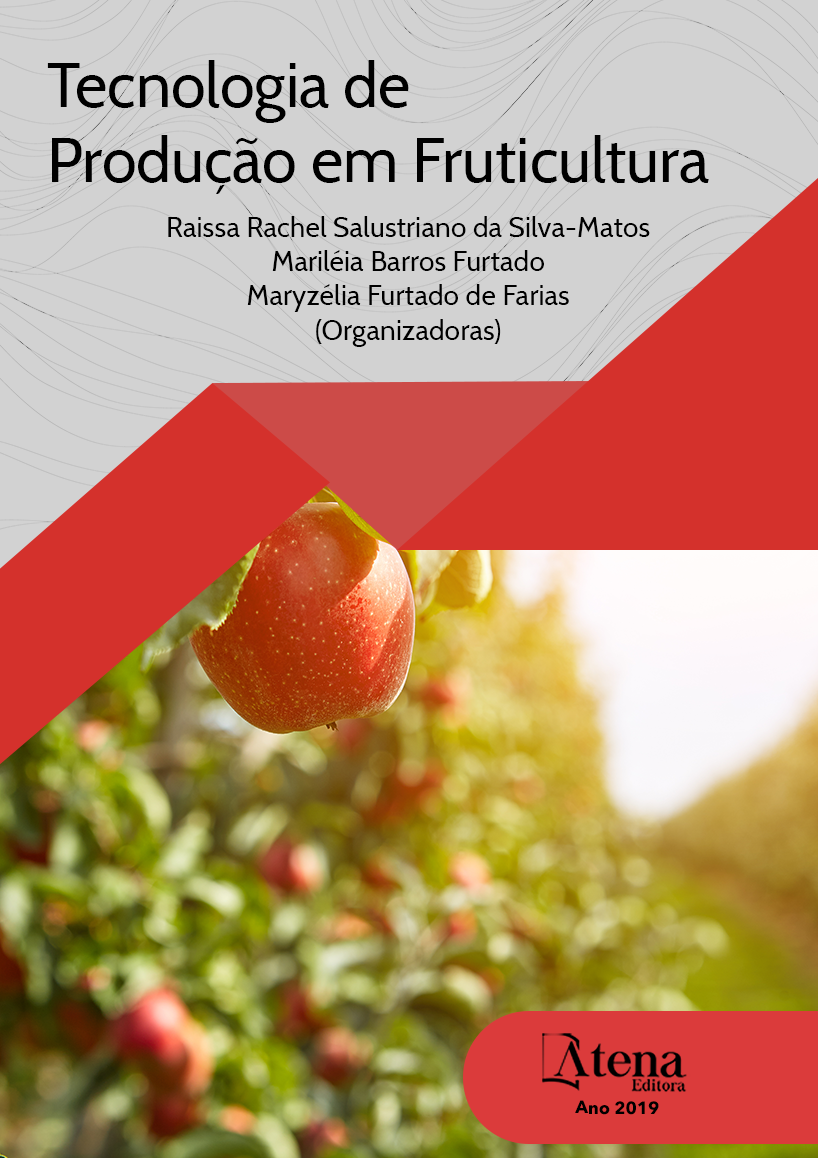
CARACTERIZAÇÃO DOS ÓRGÃOS REPRODUTORES FLORAIS DE DIFERENTES ESTRUTURAS DE FRUTIFICAÇÃO DE MACIEIRAS NO SEMIÁRIDO BRASILEIRO
A maçã é a 2ª fruta de clima
temperado mais produzida no Brasil, porém a
expansão para regiões subtropicais esbarra na
falta de conhecimento sobre a interferência das
condições climáticas no desenvolvimento da
biologia floral e reprodutiva. Assim, objetivouse avaliar os órgãos reprodutores florais
de diferentes estruturas de frutificação, em
macieiras sob condição semiárida tropical, em
Lagoa Grande-PE. O trabalho foi conduzido
de julho/2015 a dezembro/2016 na Fazenda
Sereníssima, em Lagoa Grande-PE. Com
delineamento em blocos casualisados, com
5 repetições, em arranjo fatorial 3x3, de
3 cultivares (‘Julieta’, ‘Princesa’ e ‘Eva’) e
gemas de 3 diferentes estruturas (axila de
brindila, terminal de brindila e de esporão).
Foram avaliadas: massa fresca do pistilo;
comprimento médio do pistilo; diâmetro médio
do ovário; número de grãos de polén por flor;
germinação in vitro de grão polén; número
médio de anteras por flor; e comprimento médio
(mm) do filete. A análise estátisca foi realizada
software Assistat®. As estruturas reprodutivas
femininas apresentaram biometria semelhante
ao comprimento e diâmetro médio do ovário a
outras regiões produtoras, e diferiram na massa
fresca média do pistilo, havendo superioridade
das cultivares Julieta e Princesa. Quanto
as estruturas masculinas verificou-se que o
número médio de anteras é maior nas gemas
brindilas e não varia entre as cultivares. O
comprimento médio do filete sofre interação
entre as cultivares e as estruturas. O número
de grãos de pólen foi superior em brindilas. O
maior percentual de germinação dos grãos de
pólen foi em brindilas, na ‘Princesa’, seguida
pelas cultivares Julieta e Eva.
CARACTERIZAÇÃO DOS ÓRGÃOS REPRODUTORES FLORAIS DE DIFERENTES ESTRUTURAS DE FRUTIFICAÇÃO DE MACIEIRAS NO SEMIÁRIDO BRASILEIRO
-
DOI: 10.22533/at.ed.0311909108
-
Palavras-chave: antese, Malus domestica Borkh., morfologia floral, tubo polínico
-
Keywords: anthesis, Malus domestica Borkh., floral morphology, pollen tube.
-
Abstract:
Apple is the 2nd most produced temperate fruit in Brazil, but its expansion
to subtropical regions bumps into the lack of knowledge about the interference of climatic
conditions in the development of floral and reproductive biology. Thus, the objective
was to evaluate the floral reproductive organs of different fruiting structures, in apple
trees under tropical semiarid condition, in Lagoa Grande-PE. The work was conducted
from July/2015 to December/2016 at Fazenda Sereníssima, in Lagoa Grande-PE. With
a randomized block design with 5 replications in 3x3 factorial arrangement of 3 cultivars
(‘Julieta’, ‘Princesa’ e ‘Eva’) and buds of 3 different structures (spur buds, terminal and
axillary buds). We evaluated: fresh pistil mass; average pistil length; average ovary
diameter; number of pollen grains per flower; in vitro germination of pollen grain; average
number of anthers per flower; and average length (mm) of fillet. Static analysis was
performed Assistat® software. The female reproductive structures presented biometrics
similar to the length and average diameter of the ovary to other producing regions,
and differed in the average fresh mass of the pistil, having superiority of the cultivars
Julieta and Princesa. As for the male structures it was found that the average number
of anthers is higher in the toast buds and does not vary between cultivars. The average
length of the fillet undergoes interaction between the cultivars and the structures. The
number of pollen grains was higher in brindillas. The highest percentage of pollen grain
germination was in brindillas, in ‘Princesa’, followed by cultivars Julieta and Eva
-
Número de páginas: 15
- Paulo Roberto Coelho Lopes
- Raissa Rachel Salustriano da Silva-Matos
- Inez Vilar de Morais Oliveira
- Jacqueline Souza dos Santos
- Raissa Rachel Salustriano da Silva Matos


